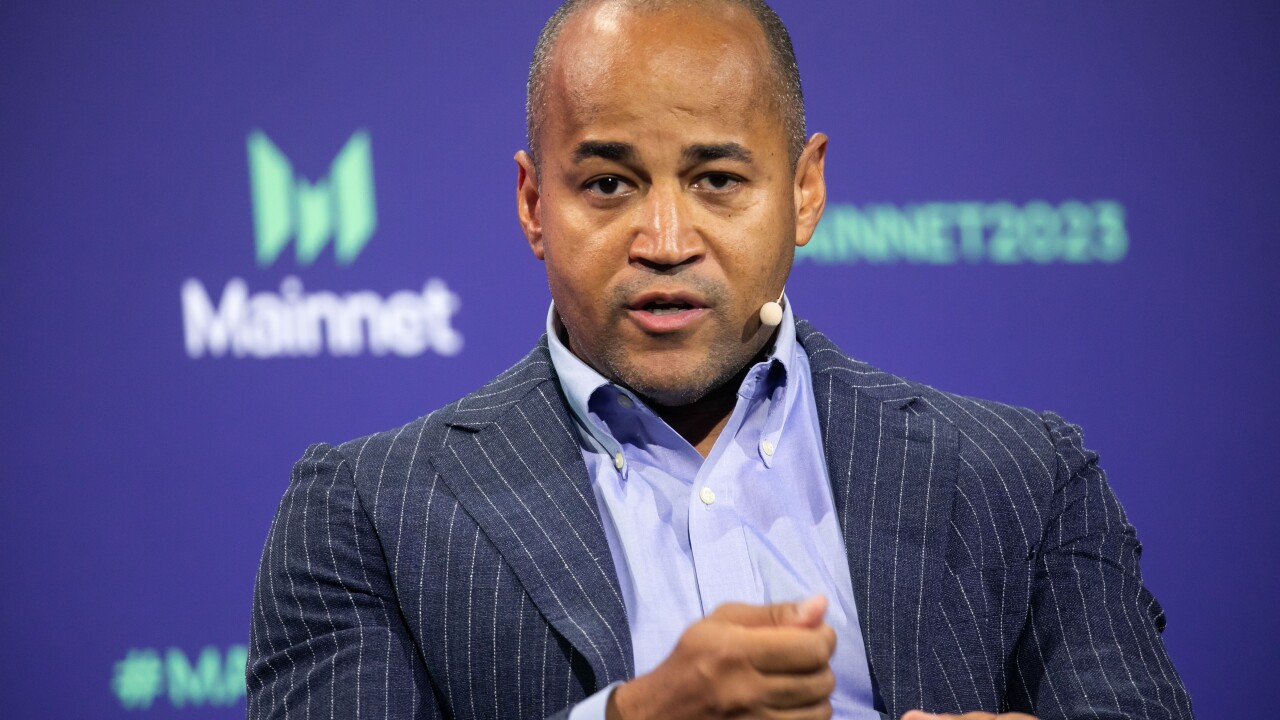Want unlimited access to top ideas and insights?
Outstanding service on its own isn’t enough for credit unions to get top-of-wallet status with members.
That’s the word from Samantha Paxson, chief marketing and experience officer for CO-OP Financial Services, who told Credit Union Journal recently that digital payments are a “strong indicator” for whether or not a CU can go top of wallet.
“Credit unions need to be digitally focused so they can serve their members on an ecosystem level,” she said. “People think holistically, so credit unions need to make it easy. They need to integrate services. They need to be agile and fast. Members need to be able to engage with their credit union from anywhere.”

Similarly, CO-OP President and CEO Todd Clark discussed the need for CUs’ digital transformations during a breakout session at the Credit Union National Association’s recent America’s Credit Union Conference in Las Vegas, and he pointed out digital channels and digital payments have become so ubiquitous that millennials – a demographic credit unions are desperately courting – consider them to be second nature. For example, said Clark, many street artists now take donations via mobile payment systems such as Venmo and Square.
This past quarter, Clark noted, Venmo processed $6.8 billion in total payment volume, double the amount from the same quarter one year prior. These companies are not just processing payments, he said, they are capturing information that can be used to improve the customer experience and build brand loyalty.
“In the digital era, getting into the game may be easier, but that also means staying on top is getting more and more difficult,” he said. “Digital experiences are changing consumer expectations and companies are adapting as fast as they can. Consumers expect you to understand their individual needs, and you can thank big data for that.”
Consumers expect all of their experiences with a company to be seamless, and they will stop doing business with a company if they have a bad experience. More than price or product, said Clark, today’s consumers see experience as a key brand differentiator.
Why fintech matters for CUs
Clark pointed to online personal finance company SoFi, which, by leveraging digital, has turned the concept of “scale” on its head. The company has funded $19 billion in loans to 300,000 members, and has resulted in $1.45 billion in member savings.
“SoFi was founded in 2011. If a credit union had these stats, we would be impressed,” Clark said.
In June,
These companies connect with consumers because they are digitally driven, said Clark. In case credit unions think the same rules do not apply to them, he warned of a trend reported on the Financial Brand earlier. While for years those in financial services have been talking about omni-channel behavior – meaning consumers who move from digital to human interaction channels at will – now there is a significant rise in “omni-digital” consumers, who do all or nearly all of their activity digitally, with mobile being dominant.
“Your member experience is fast becoming an omni-digital experience,” he said. “That means your digital channels and digital strategy are everything.”

Clark said credit union management must focus on delivering via digital channels, because payments are now the leading indicator of PFI status, and offering speed, agility and a frictionless experience are critical to growing PFI.
Non-interest income growing
CO-OP’s Paxson noted that top-of-wallet status is more important than ever because the payments model – and the resulting non-interest income – continues to grow at credit unions.
In his ACUC presentation, Clark observed that fee revenue and interchange income for CUs have risen dramatically in the last two decades
“Non-interest income used to be a small fraction of overall income. Now it’s a sizable portion. And a very significant percentage of non-interest income for credit unions, 42 percent, is interchange, so getting to top of wallet is imperative. When you anticipate member needs and leverage data to deliver faster, more customized experiences, you will be top of wallet, which will help you build that non-interest income/interchange…income that has become much more critical to your earnings.”





